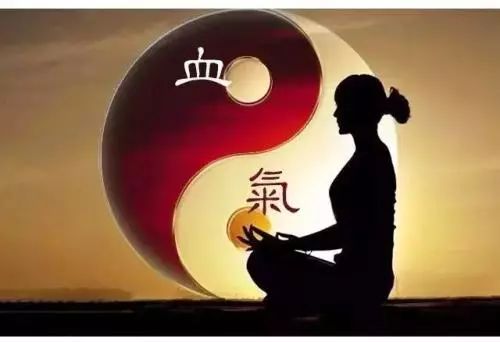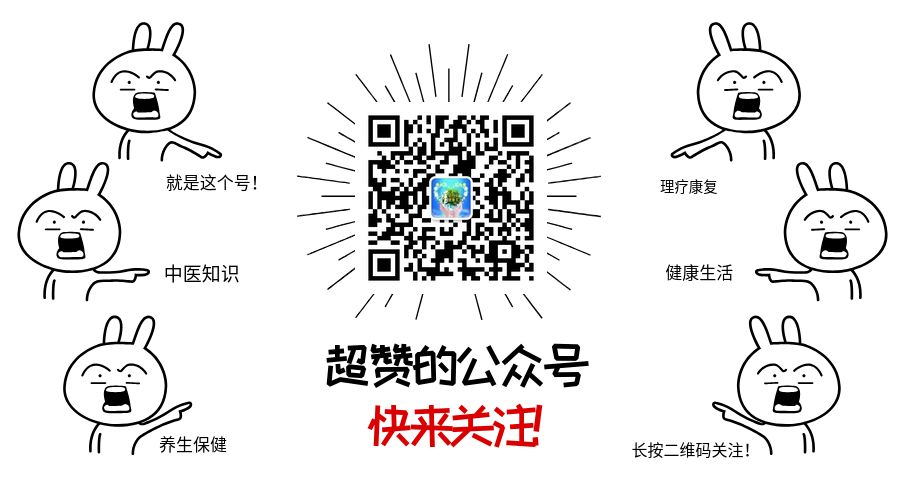
Traditional Chinese Medicine (TCM) has a complete diagnostic theory and treatment methods, utilizing many specialized terms. Since TCM is inherited from ancient China, these terms can be confusing if understood directly in modern Chinese, which hinders the formation of TCM thinking and leads to misunderstandings in modern medical theory. To learn TCM, it is essential to distinguish these confusions. Here, we will discuss several terms in TCM: Qi and Blood (气血), Blood Stasis (瘀血), and Qi Stagnation with Blood Stasis (气滞血瘀).
1. Qi and Blood (气血)
In TCM theory, meridians are a network of “energy channels” throughout the body, accompanying blood vessels. The “Qi” (气), or “vital energy,” flows through these meridians. The meridians serve as the main pathways, while the heart pumps blood, providing the driving force for blood circulation. However, the nourishment of the body by blood relies on the “Qi” within the meridians. Under normal circumstances, Qi and Blood are interdependent and inseparable: “Blood is the mother of Qi, and Qi is attached to Blood.” Qi originates from Blood, which nourishes and replenishes Qi. Qi is stored in the five organs and has different characteristics based on the five elements associated with the meridians. The five organs govern and distribute Qi through the meridians to perform their respective functions. As stated in the “Huangdi Neijing, Suwen, Discussion on the Five Organs”: “The so-called five organs store essence and Qi without leaking.” Normally, Blood serves as the carrier of Qi, and “Qi and Blood” refers to the combined nourishing ability of Blood and Qi for the human body. Therefore, in TCM diagnosis, treatment, and health maintenance, the term “Qi and Blood” is used. Western medicine does not have the term “Qi and Blood”; it only refers to the tangible “blood” in a material sense, as the concept of “Qi” does not exist in Western medicine.
2. Blood Stasis (瘀血)
In modern Chinese, “瘀” is synonymous with “淤”. Blood Stasis in Western medicine refers to the accumulation of blood in small veins or capillaries due to obstructed venous return, leading to congestion. For example, bruising from external trauma results from ruptured capillaries, while pulmonary congestion and hepatic congestion occur when venous return is obstructed. The consequences of Blood Stasis depend on the nature of the organ or tissue, the degree of stasis, and the duration, with common outcomes including stasis-related edema, bleeding, and sclerosis. In severe cases, it can lead to atrophy, degeneration, and necrosis of organ cells.
In TCM theory, Blood Stasis has a completely different meaning: it does not refer to the accumulation or obstruction of actual “blood”. TCM’s Blood Stasis specifically refers to “blood that has left the meridians” (which can be understood as “free” blood outside the meridians), indicating a state where blood is separated from the meridians. If local blood lacks the “Qi” provided by the meridians, it cannot nourish the body (providing nutrients and eliminating waste), becoming “useless blood,” which is termed “Blood Stasis”. Blood Stasis may not be visible on the surface or in organs but can occur anywhere in the body. If TCM indicates that Blood Stasis has occurred in certain areas, it must pose a risk or have already caused pathological changes in the body. If modern instruments are used for detection or anatomical observation, there may not be any obvious issues with blood circulation or ruptured blood vessels. The concept of “Blood Stasis” in TCM provides a basis for early diagnosis, while the theory of meridians offers diagnostic and treatment methods, even if the risk has already developed into a disease.
The cause of Blood Stasis is a problem with the meridians (or the “Qi” within the meridians), specifically caused by “meridian obstruction” (where “obstruction” means there is no “Qi” or the “Qi” is too weak). Human diseases are closely related to “Qi and Blood”; thus, in TCM, there is a saying: “If one does not understand the meridians in medicine, any action taken will be wrong.”
3. Qi Stagnation with Blood Stasis (气滞血瘀)
“Qi Stagnation with Blood Stasis” describes a pathological state in TCM. “Qi Stagnation” refers to the sluggish flow of “Qi” in the meridians, where “Qi” is deficient or accumulated; “Blood Stasis” refers to the result of “Qi Stagnation,” leading to the formation of “Blood Stasis.”
Blood accumulation due to external force or trauma can also lead to “Qi Stagnation”. Blood serves as the carrier of “Qi”; thus, obstructed blood circulation naturally causes “Qi Stagnation”. Mild external injuries causing “Qi Stagnation” are temporary, as the body will automatically use the accumulated “Qi” to “flush” the damaged area, restoring its function. For instance, if an external injury causes blood vessels to rupture or break, the “Qi” becomes obstructed and accumulates. Under the influence of the meridians and “Qi,” local blood circulation will gradually rebuild, while “useless blood” leaking from the vessels will be removed, allowing the injury to heal naturally. For external injury-related “Blood Stasis,” TCM uses invigorating blood medicines to accelerate its resolution.
4. Self-Assessment of Symptoms
Self-Assessment for Qi Stagnation with Blood Stasis
1. Feeling weak or lacking energy when speaking, often feeling fatigued and reluctant to talk.
2. Pale or dull complexion.
3. Frequent palpitations, chest tightness, or intermittent chest pain, dark lips, and a tongue with purple coloration.
4. Symptoms such as stabbing pain in the hypochondrium, jaundice, poor appetite, and abdominal distension.
5. Limbs easily feel numb or painful, with cold or hot extremities.
6. In women, abdominal distension and pain before or during menstruation, with a reluctance to apply pressure. Menstrual flow is scant or obstructed, gradually increasing, with dark purple blood containing clots; pain decreases or disappears after the clots are expelled, often accompanied by breast and rib distension before menstruation.
7. In men, discomfort or heaviness in the lower abdomen, perineum, or testicles, or blood in urine or semen. The tongue may appear purple or have stasis points.
8. The tongue may appear dark or have stasis points, with a deep and thin pulse.
9. Often irritable and easily angered, unable to remain calm in stressful situations, frequently anxious or angry.
Emphasis on Qi Stagnation
Chest tightness with sighing, distension and pain in the sides, stomach, and abdomen, belching, a sensation of obstruction in the throat, introverted personality, melancholic, narrow-minded, abdominal pain or diarrhea during emotional fluctuations, breast and lower abdominal distension and pain in women, dark tongue color, and wiry pulse.
Emphasis on Blood Stasis
Purple or dark lips and nails, skin with bruises or roughness, localized stabbing or cramping pain that is fixed, or palpable masses, facial pigmentation, dark circles, chloasma, painful menstruation with dark purple blood containing clots, or amenorrhea, with a dark or purplish tongue, and stasis in the sublingual veins, with a choppy pulse.
5. How to Alleviate?
If “Blood Stasis” is caused by “Qi Stagnation,” it is relatively difficult to recover automatically; one must first resolve the “Qi Stagnation” to alleviate the “Blood Stasis.” The causes of “Qi Stagnation” are numerous, possibly due to external pathogenic factors such as wind, cold, heat, dampness, dryness, or fire (“external evils”), or may arise from “internal evils” triggered by external factors or unhealthy lifestyles. “Qi Stagnation” may cause “Qi” to take a detour, forming localized “Blood Stasis,” or may create a “Qi mass” (abnormal accumulation of “energy”), obstructing the flow of “Qi” in other areas of the meridians.

After “Qi Stagnation” causes “Blood Stasis,” the body will, to some extent, use the dynamic interactions of the five elements in the meridians to repair “Blood Stasis” or maintain basic bodily functions. There may not be severe diseases formed temporarily (often unnoticed or disregarded), but risks are present, and over time, localized pathological changes may develop. “What is within will inevitably manifest outside”; the body will experience varying degrees of discomfort, such as “sub-health” or localized dysfunction. Prolonged “Blood Stasis” can directly lead to severe localized diseases or, through the five-element transmission of the meridians, cause diseases in other areas. Conversely, if a disease has persisted for a long time, there will inevitably be “Blood Stasis”; thus, “long-term illness must lead to stasis, and stasis must lead to illness.” Therefore, early detection and resolution of “Blood Stasis” are crucial to treat minor ailments and prevent major diseases.
To resolve “Blood Stasis,” TCM commonly refers to “unblocking the meridians,” which means reconnecting the meridians and blood, allowing “Qi to rely on blood, and blood to rely on Qi,” enabling “Qi and Blood” to deliver nutrients and eliminate waste, restoring normal local functions. The essence of “reconnection” is to guide the meridians and “Qi” back to their original state, using the six methods of TCM: scraping, acupuncture, moxibustion, herbal medicine, massage, and qigong, which are the usual treatment methods in TCM.
In the early stages of “Blood Stasis,” before severe diseases develop, simple methods can be used to alleviate it, such as acupressure based on meridian theory, gua sha, cupping, and some health exercises to actively mobilize the body’s “Qi and Blood” to repair existing “Blood Stasis” and relieve discomfort. Even for already formed diseases, these methods can help alleviate symptoms and treat them.
Dietary Choices for Qi Stagnation and Blood Stasis
For example: white radish, citrus fruits, garlic, ginger, fennel, cinnamon, cloves, peach kernel, chives, yellow wine, red wine, onion, ginkgo, rose tea, jasmine tea, etc. If experiencing emotional depression, psychological counseling should be prioritized, along with liver-soothing and Qi-regulating herbs such as Citron (香橼), Bupleurum (柴胡), Curcuma (郁金), Green Peel (青皮), Cyperus (香附), Chuanxiong (川芎), and Green Plum (绿萼梅).
Dietary Restrictions for Qi Stagnation and Blood Stasis
Individuals with a Qi Stagnation and Blood Stasis constitution should limit salt and monosodium glutamate to avoid increasing blood viscosity and worsening Blood Stasis. Foods that can cause gas, such as sweet potatoes, taro, fava beans, and chestnuts, should be avoided. Additionally, excessive consumption of fatty meats, cream, eel, crab roe, egg yolk, fish roe, chocolate, fried foods, and sweets should be avoided to prevent increased blood lipids, which can obstruct blood vessels and affect the flow of Qi and Blood. Cold drinks should also be avoided to prevent interference with the flow of Qi and Blood.

————Further Reading————
Note: The various prescriptions and remedies mentioned in this article are for reference and study by professional TCM practitioners only and should not be used as prescriptions. Please do not use them blindly; this platform does not bear any responsibility for any consequences arising from this.
Copyright Statement: We emphasize sharing; the articles and images are sourced from the internet, and the copyright belongs to the original authors. If there are any objections, please inform the editor, and we will delete them promptly.
FollowTherapeutic Encyclopedia↑↑↑, reply or directly click the keywords below to automatically query the corresponding knowledge and treatment methods for common diseases.

Nine Constitutions in TCM: Yang Deficiency, Yin Deficiency, Phlegm-Dampness, Qi Stagnation, Qi Deficiency, Blood Stasis, Damp-Heat, Special Constitution, Harmonious Constitution
Five Organs and Six Bowels: Liver, Heart, Spleen, Lung, Kidney, Six Bowels: (Gallbladder, Small Intestine, Stomach, Large Intestine, Bladder, Sanjiao)
Diagnosis:Pulse Diagnosis, Physical Examination, Sweat Diagnosis, Eye Diagnosis, Nail Diagnosis, Facial Diagnosis, Hand Diagnosis, Vein Diagnosis, Buttock Diagnosis, Rash Diagnosis, Chest Diagnosis, Leg Diagnosis, Cupping Diagnosis, Back Diagnosis
Beauty and Body Shaping: Breast Enhancement, Chloasma, Acne, Gua Sha, Twelve Meridians, Lymphatic Detox, Weight Loss, Abdominal Protrusion, White Hair, Weight Loss
Sub-Health Dietary Supplements:Four Substance Decoction, Four Spirit Decoction, Four Gentlemen Decoction, Trigger Foods, Spleen Nourishment, Lung Moistening, Heart Nourishing, Kidney Regulating, Liver Protecting
Sexual Health Issues:Impotence, Prostatitis, Premature Ejaculation, Benign Prostatic Hyperplasia, Nocturnal Emission, Phimosis, Menopause, Breast Hyperplasia, Cold Uterus, Breast Cancer, Ovarian Cysts, Cervicitis, Amenorrhea, Gynecology, Abnormal Vaginal Discharge, Postpartum Care, Menstrual Maintenance, Pelvic Inflammation, Fibroadenoma, Infertility, Irregular Menstruation, Endocrine Disorders, Polycystic Ovary Syndrome
Children’s Knowledge: Infant Knowledge, Pediatric Tuina, Pediatric Diarrhea, Pediatric Fever, Pediatric Hernia, Baby Night Crying
Eye Diseases:Glaucoma, Myopia, Conjunctivitis, Hyperopia, Cataracts, Floaters, Styes
ENT Disorders:Deafness, Tinnitus, Oral Ulcers, Halitosis, Toothache, Cough, Pharyngitis, Rhinitis, Otitis Media, Sinusitis, Nasal Congestion
Cardiovascular and Cerebrovascular Diseases:Hypertension, Hyperlipidemia, Diabetes, Coronary Heart Disease, Myocardial Infarction, Stroke, Varicose Veins, Gout, Hypotension, Cerebral Thrombosis, Arrhythmia, Angina Pectoris, Cerebral Hemorrhage, Myocardial Ischemia, Anemia
Bone and Joint Diseases:Cervical Spondylosis, Synovitis, Arthritis, Shoulder Periarthritis, Tendonitis, Meniscus Injury, Lumbar Muscle Strain, Low Back Pain, Lumbar Disc Herniation, Osteophyte Formation, Knee Joint Effusion, Tennis Elbow, Dowager’s Hump, Osteoporosis, Heel Pain, Avascular Necrosis of the Femoral Head, Tendinitis
Neurological Diseases: Sciatica, Alzheimer’s Disease, Trigeminal Neuralgia, Neurasthenia, Muscle Atrophy, Parkinson’s Disease
Common Diseases:Cold, Fever, Headache, Constipation, Hemorrhoids, Appendicitis, Cold Hands and Feet, Frostbite, Gastritis, Stomach and Duodenal Ulcers, Gastroptosis, Insomnia, Fatty Liver, Spleen and Stomach Deficiency, Kidney Stones, Gallstones, Lipomas, Muscle Atrophy, Eczema, Dampness Removal, Bronchitis, Renal Cysts, Uremia, Acupuncture for Smoking Cessation, High Uric Acid, Kidney Deficiency, Dampness, Internal Heat, 221 Types of Skin Disease Atlas, Rheumatism, Liver Fire Excess
Sharing is a joy; move your fingers to let more people gain health and happiness.
Long press the following QR code to follow Therapeutic Encyclopedia to learn more about TCM health knowledge.



